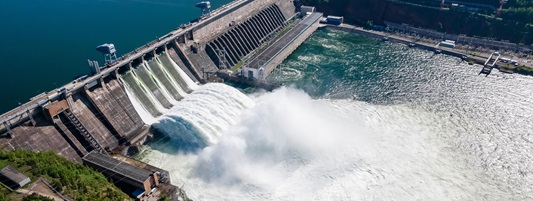Hydropower is energy derived from flowing water. More than 2,000 years ago, the ancient Greeks used waterpower to run wheels for grinding grain; today it is among the most cost-effective means of generating electricity and is often the preferred method where available. In Norway, for example, 99% of electricity comes from hydropower. The world’s largest hydropower plant is the 22.5 gigawatt Three Gorges Dam in China. It produces 80 to 100 terawatt-hours per year, enough to supply between 70 million and 80 million households.
Global hydropower capacity reached 1 283 GW in 2024 (excluding pumped storage), with 15 GW of capacity expansions that same year. The global weighted-average levelised cost of electricity (LCOE) for hydropower declined by 2% between 2023 and 2024, while as a mature renewable technology, hydropower has maintained its position as a commercially attractive option that uniquely provides not only low-cost electricity generation but also valuable grid services like storage and large-scale flexibility, with the global weighted average LCOE for 2024 being USD 0.057kWh.
Small-scale micro-hydropower projects can make a big difference to communities in remote locations.
The basic principle of hydropower is using water to drive turbines. Hydropower plants consist of two basic configurations: with dams and reservoirs, or without. Hydropower dams with a large reservoir can store water over short or long periods to meet peak demand. The facilities can also be divided into smaller dams for different purposes, such as night or day use, seasonal storage, or pumped-storage reversible plants, for both pumping and electricity generation. Hydropower without dams and reservoirs means producing at a smaller scale, typically from a facility designed to operate in a river without interfering in its flow. For this reason, many consider small-scale hydro a more environmentally-friendly option.
Hydropower Data
Hydropower without dams and reservoirs means producing at a smaller scale, typically from a facility designed to operate in a river without interfering in its flow. For this reason, many consider small-scale hydro a more environmentally-friendly option.






